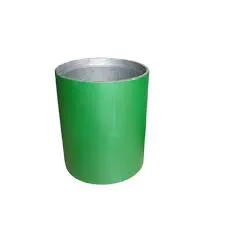- Afrikaans
- Albanian
- Amharic
- Arabic
- Armenian
- Azerbaijani
- Basque
- Belarusian
- Bengali
- Bosnian
- Bulgarian
- Catalan
- Cebuano
- Corsican
- Croatian
- Czech
- Danish
- Dutch
- English
- Esperanto
- Estonian
- Finnish
- French
- Frisian
- Galician
- Georgian
- German
- Greek
- Gujarati
- Haitian Creole
- hausa
- hawaiian
- Hebrew
- Hindi
- Miao
- Hungarian
- Icelandic
- igbo
- Indonesian
- irish
- Italian
- Japanese
- Javanese
- Kannada
- kazakh
- Khmer
- Rwandese
- Korean
- Kurdish
- Kyrgyz
- Lao
- Latin
- Latvian
- Lithuanian
- Luxembourgish
- Macedonian
- Malgashi
- Malay
- Malayalam
- Maltese
- Maori
- Marathi
- Mongolian
- Myanmar
- Nepali
- Norwegian
- Norwegian
- Occitan
- Pashto
- Persian
- Polish
- Portuguese
- Punjabi
- Romanian
- Russian
- Samoan
- Scottish Gaelic
- Serbian
- Sesotho
- Shona
- Sindhi
- Sinhala
- Slovak
- Slovenian
- Somali
- Spanish
- Sundanese
- Swahili
- Swedish
- Tagalog
- Tajik
- Tamil
- Tatar
- Telugu
- Thai
- Turkish
- Turkmen
- Ukrainian
- Urdu
- Uighur
- Uzbek
- Vietnamese
- Welsh
- Bantu
- Yiddish
- Yoruba
- Zulu
Design and Analysis of Coupling Systems for Tubing Applications in Various Industries
Coupling for Tubing An Essential Component in Oil and Gas Operations
Tubing is a crucial element in the oil and gas industry, serving as the conduit for the extraction of hydrocarbons from beneath the Earth’s surface. The effective operation of tubing systems relies heavily on the implementation of couplings, which are designed to connect two lengths of tubing together securely. This article delves into the significance of couplings in tubing, their types, specifications, and the role they play in ensuring the efficiency and safety of oil and gas operations.
Importance of Tubing Couplings
Couplings are integral to maintaining the structural integrity of tubing systems. They serve several vital functions, including providing a leak-proof seal, accommodating the thermal expansion and contraction of the tubing material, and facilitating the safe transport of fluids under high pressure. The oil and gas industry operates in extreme conditions, where any failure in the tubing system can lead to catastrophic consequences such as blowouts, spills, or even fires.
The proper selection and usage of couplings can significantly reduce the risk of such failures. A well-designed coupling can withstand the mechanical stresses and corrosive environments typically found in oil and gas extraction sites. Thus, choosing the right coupling is a crucial step in ensuring the longevity and reliability of tubing operations.
Types of Couplings
There are several types of couplings used in tubing applications, each tailored to specific requirements based on the operational environment and the characteristics of the fluids being transported. The most common types include
1. Threaded Couplings These are the most widely used couplings in the industry. They consist of male and female threads that provide a secure connection between sections of tubing. Threaded couplings are easy to install and dismantle, making maintenance more manageable.
2. Welded Couplings These couplings involve welding two pipe ends together, creating a permanent bond. While they require more labor and skill, they are often used in highly critical applications where leaks are unacceptable.
3. Flanged Couplings Flanged couplings consist of two flanges that are bolted together. They provide ease of access for maintenance and inspection, making them suitable for applications where frequent disassembly is necessary.
coupling for tubing

4. Compression Couplings Used in specific applications, these couplings rely on a compression mechanism to secure the tubing. They are beneficial in minimally invasive repairs and allow for quick installations.
Specifications and Materials
When selecting couplings for tubing, engineers must consider several factors including material compatibility, pressure ratings, and temperature limits. Common materials include steel, stainless steel, and composite materials, each chosen based on the chemical properties of the fluids being transported and the environmental conditions of the site.
Pressure ratings are critical as they determine the maximum pressure the coupling can withstand without failing. It's essential to choose couplings that can handle the anticipated pressures of operation, including any potential surges that may occur. Additionally, temperature specifications are vital; couplings must be rated for both the maximum and minimum temperatures they will encounter during service.
Best Practices for Maintenance
Ensuring the reliability of tubing couplings requires regular maintenance and inspection. Operators should implement routine checks to identify wear and tear, corrosion, or any signs of leakage. Proper lubrication of threaded couplings is essential to prevent galling and thread damage.
Moreover, it's important to adhere to industry standards and guidelines when installing couplings. Following manufacturer specifications, employing proper torque values, and using the correct tools are critical steps in ensuring a safe and effective coupling installation.
Conclusion
Couplings play a pivotal role in the integrity and efficiency of tubing used in oil and gas operations. By understanding the various types of couplings available, their specifications, and best maintenance practices, industry professionals can significantly enhance the safety and performance of their tubing systems. In an industry where the stakes are high, the importance of reliable and durable couplings cannot be overstated. Continued advancements in materials and design will further improve coupling technology, ensuring that the oil and gas sector can meet the ever-growing global energy demands efficiently and safely.
-
Well Casing Extension Couplings – Applications and InstallationNewsJun.06,2025
-
Types of Crossover Subs in Drilling & CompletionNewsJun.06,2025
-
Key Features of High-Quality Tubing Pup JointsNewsJun.06,2025
-
Installation and Maintenance Tips for Steel Couplings for PipeNewsJun.06,2025
-
How to Select the Right Pup Joint for Oil & Gas OperationsNewsJun.06,2025
-
Applications of Stainless Steel Pipe CouplingsNewsJun.06,2025







